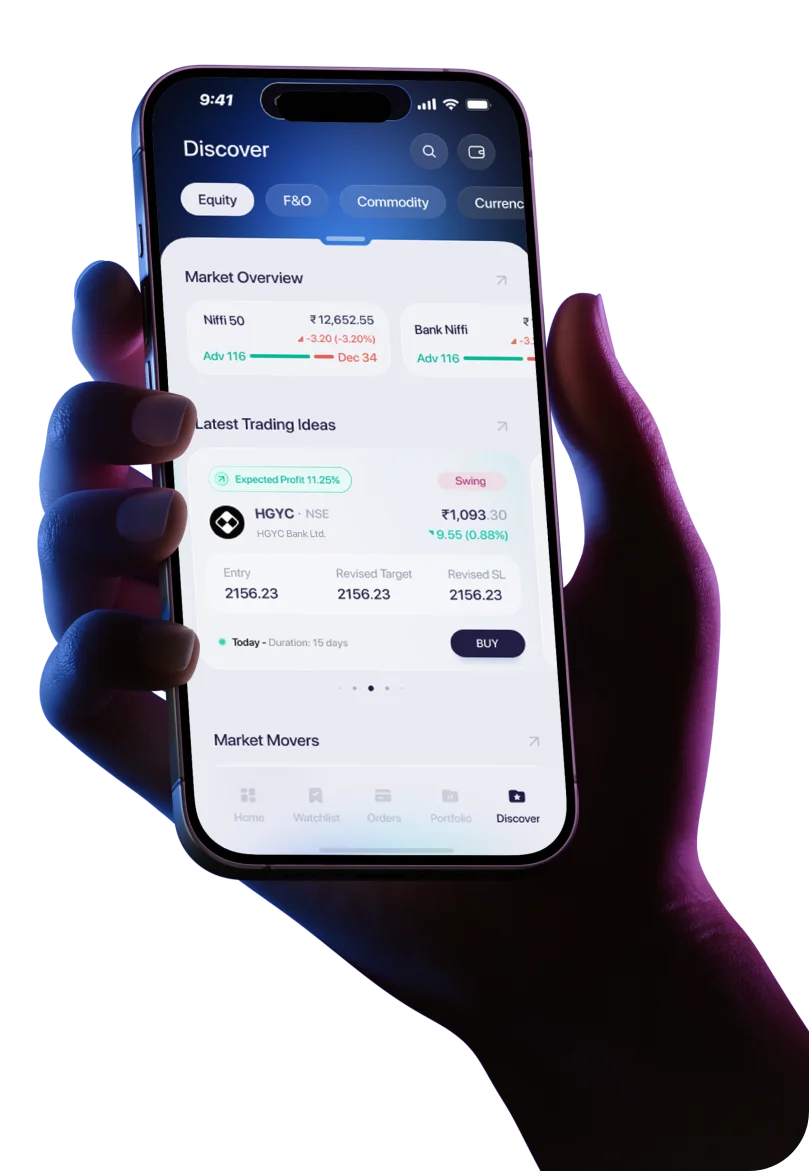If you are getting to know India’s stock market better, the journey begins with a name almost everyone recognises — the Sensex. Short for the Sensitive Index, the Sensex is the benchmark index of the Bombay Stock Exchange (BSE) and tracks 30 of the most financially sound companies listed in India. Once you know it better and understand how to invest in the Sensex, you will see that it is not just a value in the ticker. Instead, it is a benchmark that helps you assess the markets and the Indian economy at a glance.
For many investors, learning to invest in the Sensex index is the first step toward entering the equity markets. Knowing the right investment strategy can eliminate the guesswork of random stock picking. Since this index represents a diverse basket of industry leaders, it gives you easy and relatively balanced exposure to India’s top-performing companies. This makes it a compelling choice for long-term investors.
So, if you are exploring how to invest in a Sensex index fund or considering other index-linked instruments, it is essential to know what the Sensex is and how it functions. In this article, we begin with the basics and explore how to invest in the Sensex.
What is the Sensex?
The Sensex is one of India's oldest and most commonly tracked stock market indices. It reflects the movement of the Indian equity market by capturing the performance of 30 major companies trading on the BSE. Investors, analysts, and policymakers widely follow it to gauge the overall direction of the economy. For anyone trying to understand how to invest in the Sensex index, knowing what it represents is the first step to focus on.
These 30 companies are chosen from the Bombay Stock Exchange based on strict criteria like market capitalisation, sector representation, and trading volume. The idea is to maintain a diverse and balanced portfolio reflecting the Indian economy. So, when you learn to invest in the Sensex, you essentially obtain exposure to India’s corporate heavyweights in one go, thanks to a well-diversified, low-maintenance portfolio.
Ways to Invest in Sensex
If you have been wondering how to invest in the Sensex, the good news is that there is more than one route to do this. You can choose between passive and active strategies depending on your risk appetite, time constraints, and investment goals. Each option offers a different way to tap into the BSE’s top 30 companies.
Here are the different ways to invest in the Sensex:
Direct Stock Investments:
This option involves buying individual stocks directly from the Sensex-listed companies. It gives you complete control over your investment portfolio. Instead of putting your money into a fund or a distinct financial product, you handpick individual companies from the Sensex, like Infosys, ICICI Bank, or Asian Paints. Based on market conditions or company-specific news, this approach lets you decide how much to invest in each stock and when to enter or exit each trade.
However, to truly track the Sensex, you must replicate its structure. This means buying all 30 companies in the Sensex with the same weightage as the index’s composition. If you are beginning to learn to invest in the Sensex index, this might be too advanced because it requires significant capital and market knowledge. You must monitor and balance your portfolio periodically as the index composition shifts.
Here is what to keep in mind if you choose this strategy:
- It is time-intensive and best suited for experienced investors.
- You must keep tabs on earnings, market news, and sector performance.
- There is potential for higher returns, but it also carries a higher risk.
Index Funds
If you are looking for a simple, low-effort way to invest in the Sensex, index funds are a great starting point. These mutual funds aim to replicate the performance of the Sensex by investing in the same 30 companies in the same proportion. Choosing index funds means you do not have to track the market daily or pick the stocks and their entry or exit prices. Your fund manager does the heavy lifting instead.
Index funds are passively managed, meaning they do not need to be actively managed. This, in turn, leads to lower expense ratios for such funds when compared to other actively managed equity funds. They are designed to closely match the index's returns instead of surpassing it. This makes them ideal for long-term investors who aim for steady, market-linked growth.
Here is why index funds may be a suitable choice for some investors:
- They are ideal for beginners learning to invest in a Sensex index fund.
- They offer diversification across 30 top companies with a single investment.
- They carry lower costs and lower risk of underperformance compared to active funds.
Exchange-Traded Funds (ETFs)
ETFs are another innovative way to gain exposure to the Sensex, especially if you prefer flexibility and lower investment costs. These are funds that track the Sensex, much like index mutual funds. However, they can be traded on the stock exchange like regular shares. Thanks to their unique structure, investors can buy and sell the units of a Sensex exchange-traded fund on the stock exchange throughout the trading day. The trades happen at the prevailing market prices.
If you are wondering how to invest in the Sensex, ETFs offer a straightforward route with minimal entry barriers. Sensex ETFs aim to mirror the original benchmark index's composition and returns. However, unlike index mutual funds, they offer real-time pricing and better liquidity. This makes them ideal for investors who want market exposure and the ability to react quickly to sudden price movements.
Here are some key things to keep in mind about ETF investments:
- You need a demat account and a trading account to get started.
- You can start with small amounts and scale up over time.
- They are suitable for both short-term traders and long-term investors seeking index-level performance with flexibility.
Derivatives Trading: Briefly explain futures and options based on the Sensex
If you are an experienced investor with a high appetite for risk, derivatives trading is one of the more aggressive ways to engage with the Sensex. Here, you do not simply buy shares or units of funds. Instead, you trade in contracts that derive their value from the index. The two main derivatives used in the Indian market are futures and options. Both these contracts allow you to speculate on the price movements of the Sensex.
In a futures contract, you agree to buy or sell the underlying asset (here, the Sensex) at a predetermined date and price. Options, on the other hand, give you the right to buy or sell the underlying asset. You are not obligated to do so. Derivatives demand a clear understanding of market trends, timing, and technical analysis. So, if you are still exploring investing in the Sensex, this is an advanced strategy that you should only consider if you are confident in your market knowledge.
Before you choose this, keep the following in mind:
- You will need a trading account with enabled F&O (futures and options) support.
- Most trades require margins, not full contract values.
- Losses can exceed your initial investment so that derivatives can be highly risky.
A Step-by-Step Guide to Investing in Sensex
If you are clear about how to invest in the Sensex index but unsure about where to start, this guide will help you take the first steps. The process is straightforward and beginner-friendly.
Step 1: Open a Demat and Trading Account
A demat account holds your securities digitally, while a trading account allows you to buy and sell them on the stock exchange.
Step 2: Choose an Investment Method
Decide whether you want to invest directly in individual Sensex stocks, through index funds, or via exchange-traded funds.
Step 3: Select a Brokerage Partner or Fund House
Pick a trusted stockbroker or mutual fund house based on factors such as fees and charges, ease of use, and customer support.
Step 4: Invest and Track Your Portfolio
Begin your Sensex investment journey and monitor your portfolio regularly to stay aligned with your financial goals and market trends.
Benefits of Investing in Sensex
Investing in the Sensex offers the following strategic advantages for both new and experienced investors:
- Diversification across top-performing companies
- Potential long-term wealth creation
- Passive investing options are available through index funds and ETFs
Risks and Considerations
While the Sensex is a solid benchmark, investing in it comes with certain risks and factors you should consider, as listed below:
- Market fluctuations and volatility
- The impact of economic conditions on the performance of the Sensex
- The importance of long-term investment strategies
Conclusion
This concludes our guide on investing in the Sensex. Including Sensex stocks in your portfolio is a smart way to participate in India's growth story. Whether you prefer direct stocks, index funds, or ETFs, the right choice depends on your goals and risk appetite. So, take the time to understand these strategies and pick the method that best aligns with your financial objectives.




 Easy & quick
Easy & quick
Leave A Comment?